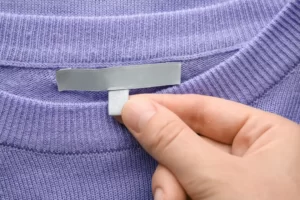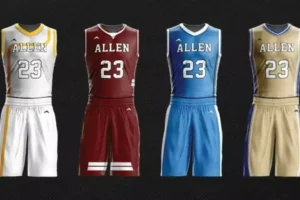
Benefits of private label clothing
Top 5 Benefits of Private Label Clothing Manufacturers! Learn how to influence customization, quality control,
An In-depth Guide OnThe Most Popular Types Of T-shirt Fabrics: Must Read Before Buying Your New T-Shirt
Have you ever bought a T-shirt that looks amazing, but after just a wash or two, it lost its charm or maybe it just didn’t feel right from the beginning? If yes, then probably the problem is not the style, but the fabric type you chose. The reality is, the fabric used in T-Shirt production plays a crucial role in the feel, durability, and, design of the garment. This comprehensive blog post will guide you through the skin-deep details of the world’s most important T-shirt fabric types. By properly understanding each type, you can make a sound choice for your wardrobe.
There are a plethora of fabric types available in the market for T-Shirts. Each has unique properties, explaining their suitability in individual contexts. In t-shirt design, the choice of fabric is much more than a simple lifestyle statement– it concerns the garment’s longevity, affordability, ease of cleaning, and eco-friendliness amongst others.

Let’s explore some of the most common fabrics used in T-shirt manufacture to give us a baseline understanding of the opportunities each type presents.
Many shun away from synthetic materials and prefer the old-school charm of cotton t-shirts. And why not? Cotton is known to be breathable, hypoallergenic, and comfortable-ranging from manufactured cotton-like pure cotton, and Egyptian cotton, to Pima and Supima. It draws sweat away from the body due to its high absorbance rate, providing a lightweight and airy appeal making it perfect for hot weather.

Cotton fabric is generated from the fluffy fiber called cotton bolls, which grow around the cotton plant’s seed pod, providing a protective case. These fluffy fibers are harvested, spun into yarns, and finally woven or knit into cotton fabric.
Given its soft comfort, breathability, and moisture-wicking abilities, it’s a staple choice for most people. However, it tends to shrink after the first wash and may lose color sooner than other materials. Also, not every type of cotton is environment-friendly.
Due to high absorption, longevity, and reduced body odor issues, cotton fabric is deemed perfect for workout gear in fitness centers & sports clubs.
A fashionable choice for customized printed t-shirts is Polyester. It’s derived from plastic, which strongly resonates with water resistance along with durability.

Polyester or “PET,”, short for polyethylene terephthalate is produced using chemical processes involving oil or ethylene. The resultant product is fiber spun, creating the wispy strands that we associate with polyester fabric.
Polyester guarantees robustness and resilience. It can withstand tough environments, endure high or fluctuating temperature, resists wrinkles, and, retains its color. However, it is not breathable like cotton, which may increase sweat production and smell.
Being water-resistant, low in cost, and known for its longevity, polyester fabric serves as an ideal choice for all-weather activewear, hats, jackets, or lining systems that repel water, thereby keeping the body dry.
Known for its exceptional breathability and durability, linen makes an excellent choice for summer outfits.

Linen is one of the oldest known types of clothing fabric. It’s created from the flax plant. The fibers from the stalk of the plant are composted until they become soft and then spun into durable threads. This raw combination is then treated and chalked before being woven into linen fabric.
Linen is one of the oldest known types of clothing fabric. It’s created from the flax plant. The fibers from the stalk of the plant are composted until they become soft and then spun into durable threads. This raw combination is then treated and chalked before being woven into linen fabric.
Despite its shortcomings, linen remains perfect for summer wear, blouses, tablecloths and upholstery due to it being highly breathable and comfortable.
Ideal for simulating the feel and texture of silk, cotton, wool, or linen, Rayon or ‘artificial silk’ possesses a supremely smooth and plush touch which makes any T-shirt feel luxurious.

Rayon is manufactured by dissolving cellulose, most commonly extracted from wood pulp. The pulp, once treated with chemicals, is pushed through tiny holes into a mixture of sulfur. The emerging result is precipitated into fibers which become the basic construct for rayon fabric.
On the bright side, rayon is easy to dye; it boasts a soft texture, is affordable, air-permeable, and is moisture-absorbent. However, it isn’t the most resilient fabric out there; it’s prone to stretching, especially when wet, and it doesn’t retain heat that efficiently. So, while it is cheaper, rayon has a lesser lifespan as compared to most other fabrics on this list.
This fabric thrives best when used for occasional, not daily, wear because of its lower durability. You will often see it used for dresses, blouses, fully-fashioned knitwear, and ties owing to its soft texture and durability.
As the name suggests, blend fabrics consist of two or more fibers that are either blended together before spinning or are spun individually and then woven or knit together

The blended fabrics are made by mixing different types of fibers together. This is often done with the goal of achieving the best qualities of several different types of materials. For example, cotton and polyester are often blended together in a t-shirt fabric; the cotton offers breathability and additions, while the polyester provides durability and flexibility.
Blended fabrics are more versatile and offer a great deal of freedom in terms of potential combinations of desirable qualities from different fabrics. They can provide the comfort of cotton but with the added durability found in synthetic textiles. Plus, they can be engineered to manage moisture, control body temperature, or kill bacteria. On the downside, the synthetic elements of the blend may lessen the breathability of the garment. Also, as they mix natural and synthetic fibers, blends might have specific wash and care requirements.
Blend fabrics are the most versatile among the lot and can serve essentially any purposes where durability and the texture of natural fibers are required. They are fantastic in items that get a lot of wear and tear but also need to be comfortable – think sportswear, outerwear, or even office wear.
Throughout the blog, we discuss how each fabric’s unique characteristics component allows different t-shirt types. Here is a more comprehensive look at each t-shirt fabric’s features:
Cotton: Known for breathability, great for warm weather, high absorbency, hypoallergenic, and generally quite durable. However, it may tend to shrink and lose color over time. Polyester: Popular for its durability, resistance to stretching and shrinking, and wrinkle-resistant. It could be less suitable if breathability is a priority due to its low absorbency.
Linen: It is amongst desired fabrics for hot and humid climates due to the fabric’s high breathability and absorbency. One downside is potentially greater maintenance requirements due to its tendency to wrinkle easily.
Rayon: Loved for its silky feel, bright coloration, and high absorbency, besides being affordable. It however scores low in durability.
Blends: They offer a balanced mix of properties that often combine the best aspects of multiple types, providing the comfort of cotton alongside polyester’s durable traits. Special care instructions may however apply.
When you’re deciding on the right t-shirt fabric, several factors come into play. To inform your decision, consider the main use of the t-shirt (like exercising or casual wear), the desired level of durability, price point, and most importantly, your personal preference comfort-wise. Let’s delve into each one of these factors in more detail:

The fabric you select should not only feel soft but should be comfortable on your skin. This often boils down to personal preference, especially whether you prefer the feel of natural fibers compared to synthetic ones.
The weight of the fabric affects how it drapes on your body. Lighter fabrics like cotton and linen give a casual, easy-going vibe, while heavier ones (e.g., wool or heavy blends) can feel more structured.
The choice of fabric substantially impacts the fit of a t-shirt. Softer fabrics like cotton and rayon will hug your body more, showcasing your physique, while stiffer fabrics like polyester often maintain their shape regardless of body contours, resulting in a looser fit.
Daily wear and accidentally rough handling can take a toll on your tee, which is when the durability of fabrics like polyester or blends is crucial. Also, the importance of care instructions cannot be underestimated; appropriate washing and drying practices significantly impact the longevity of the garment.
The price point plays a crucial role in any purchasing decision. Natural fabrics like organic cotton or linen tend to be pricier due to their benefits and lengthier cultivation and production process. On the other hand, synthetic fabrics like polyester, or semi-synthetic like rayon, are considerably more affordable due to their shorter manufacturing time and utilization of industrial by-products.
We hope that the comprehensive rundown on T-shirt fabric types provided here will prove to be a valuable resource guide for you while making your next clothing purchase. The fabric you select serves not just as a blatant expression of your style but is keenly associated with the quality, utility, and durability of the outfit. Let your next clothing shopping spree not be a fashion gamble but an informed choice.
Depending on the fabric nature, each T-Shirt will have special care instructions for washing and drying to prolong its life. It’s essential to read those instructions before you launder the T-Shirt. As a rule of thumb, natural fibers like Cotton and Linen usually demand careful handling whereas synthetics like Polyester are more resilient and may fare well even in machines.
Cotton and cotton blends are still the most popular choice for T-shirt fabrics due to their comfort, versatility, and inexpensive nature. However, with more consideration towards the environment, fashion brands are increasingly switching to Organic Cotton or design processes that consume less water/produce less waste.
No, not all cotton T-Shirts are the same. Even in cotton, there are variations like Raw Cotton (a rough version without any receiving chemical treatment), and Combed Cotton (fine brushes used to finer, cleaner fibers), among other types.
The fit of the T-shirt is intimately connected to the fabric chosen. Natural fibers like cotton or wool homebody closely, as they are breathable and flexible. Conversely, some synthetic fibers, polyester, maintain the shape better, leading consequently to looser outfits.
Expert Custom Clothing Manufcaturer

Top 5 Benefits of Private Label Clothing Manufacturers! Learn how to influence customization, quality control,

How To Find A Private Label Clothing Manufacturer! Craft Your Brand Identity:The Definitive Guide Private

What is Private Label Clothing Manufacturing? How Can It Transform Your Brand? Explore this Ultimate

How To Choose The Right Fabric For Basketball Uniforms? That Gives Teams Better Performance On
Most Recent Posts
Expert Custom Clothing Manufcaturer
Join our Mailing list!
Get all latest news, exclusive deals and updates.